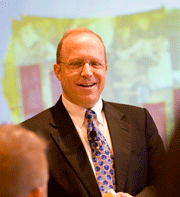
Randy Cohen
It's All in the Data: Supply and Demand for the Arts
Posted by Feb 07, 2011

Randy Cohen
On January 31, National Endowment for the Arts Chairman Rocco Landesman posted a blog about (1) the issue of supply and demand in the arts and (2) the ratio of arts administrators to artists. I had the opportunity to augment the first point using additional data as well as clarify the second in my posting. Because these are two issues that may arise for you, we thought it worth posting here so you have the facts at your fingertips.
An examination of years of trend data indicate that demand for the arts is indeed lagging supply. The good news is that it also indicates that audiences are not walking away from the arts, but rather broadening how they choose to engage in the arts.
There is also one noteworthy correction to be made in the Chairman’s numbers and thus, one of his points.
On the supply side:
In our annual National Arts Index report, released just two weeks ago, we track the Urban Institute’s count of registered nonprofit arts organizations as one of our 81 national-level indicators. In the past decade, the number of nonprofit arts organizations in the United States has grown 45 percent (75,000 to 109,000), a greater rate than all nonprofit organizations, which grew 32 percent (1,203,000 to 1,581,000). Or to take the more startling look, between 2003 and 2009, a new nonprofit arts organization was created every three hours in the U.S.
Read More






















